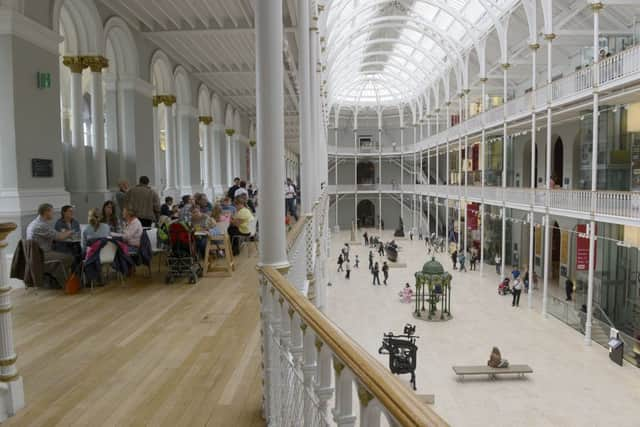A new centre will celebrate our scientific heritage


Scotland is a nation with a proud history in science. We can lay claim to eminent minds like Alexander Fleming, discoverer of penicillin, Peter Higgs, whose work has unlocked the secrets of the early universe and biologist Anne Glover, who is playing an inspirational role in promoting science at the highest levels of government.
Scotland is also notable for its contribution to the world of science engagement – indeed, Edinburgh hosted the world’s very first science festival, and its legacy can be seen today in the worldwide acclaim which the Edinburgh International Science Festival has achieved. We have a network of Science Centres across our cities too, and now with the redevelopment of the science and technology galleries at the National Museum of Scotland, a new centre for scientific engagement will be created where the people of Scotland can discover objects both old and new to explore the world of science in new ways.
Advertisement
Hide AdAdvertisement
Hide AdThis redevelopment, due to open next summer, has benefitted from support, from the Heritage Lottery Fund, the Scottish Government and individuals. A particularly significant new development for National Museums Scotland has been the opportunity to work with the Wellcome Trust, one of the world’s largest and most influential funders. It is a charitable foundation which supports scientists, educators, artists, performers and others working in the fields of human and animal health.
The trust’s generous support has made it possible for National Museums to look anew at how it brings science to the public, and to have a dedicated team developing new workshops, education sessions, challenges and shows while collecting new objects that reflect the past, present and future of all things medical, from Scotland and the rest of the world.
What does this mean on a practical level? Dolly the sheep has been one of the museum’s most popular exhibits since she arrived in 2003. With our science and technology galleries closed, Dolly has taken a short break but will be having a holiday at Edinburgh University Library for an exhibition later this summer. In the meantime we are working with the Roslin Institute to explore new ways of displaying her, reflecting developments in the last two decades in the field of genetic research: when the galleries re-open next year, it will be Dolly’s 20th birthday.
One of the more topical objects recently acquired is a ReBOV rapid response test kit for Ebola, the first test kit which can be used in the field to quickly identify Ebola patients. This will feature in one of the new “update zones” in the galleries which will look at the cutting edge of scientific progress, refreshed over time thanks to the support of the Wellcome Trust.
As the 21st century affords new methods with which to display and interpret content, so too do new means of collecting emerge, with museum curators collaborating with visitors on social media to find pieces for the new galleries. One curator needed an example of a modern stethoscope. A call was issued on social media for doctors who had stethoscopes with interesting stories and there was a fantastic response. The chosen doctor’s stethoscope will go on display in the new galleries.
Another exciting development is a new series of sessions, “Under 5s Biomedical Science”, which has the rather fun working title of “Pop-up Teddy Bear Hospital”. It is a difficult-sounding idea to aim at such young people, but we think this area comes down to really simple concepts – we’re planning on taking a fun, song-filled trip down a microscope to a world of giant, fuzzy microbes and learning why we need to wash our hands, complete with dance actions, for example.
It’s evident that we need to show young people that science is really for them – it’s a way of exploring, of discovering new things. It’s something that, in many ways, the youngest children are best at and we want to inspire them to keep asking those questions and making amazing discoveries throughout their lives.
We want everyone to feel they can be a part of the exciting developments that are happening here. We’re looking forward to seeing and hearing from you when we open the new galleries – we can’t wait!
• Ali Floyd, science engagement officer, National Museums Scotland, www.nms.ac.uk
SEE ALSO